The Old St. Louis Coliseum (1909 - 1953)
Introduction
Text-to-speech Audio
When the St. Louis Coliseum opened in 1909, it was considered the largest arena in the country and one of the largest in the world. For thirty years, the Coliseum hosted large-scale live events such as national political conventions, musical performances, hockey games, tennis matches, horse shows, swimming competitions, and other spectacles in downtown St. Louis. In 1916, the Democratic National Convention was held at the Coliseum, and incumbent President Woodrow Wilson was nominated. Outside the building, female suffragists staged a silent demonstration known as the Golden Lane Parade, as they lined up on both sides of the street to protest their lack of representation and to demand a party platform for women's right to vote. The event made national news, as the male delegates to the convention had to walk past the line of 8,000 women (wearing gold "Votes for Women" sashes) to enter the building. Despite the Coliseum's role in historic events such as this, by 1939, it was closed and boarded up, while the Kiel Opera House (1935) instead became the city's premiere venue for live events. During World War II, the Coliseum was repurposed as a storage facility for U.S. military vehicles, but by the early 1950s, the unoccupied building was crumbling. In 1953, it was condemned by the City Building Commissioner, who stated that the Coliseum should either be repaired or torn down. As there was no immediate move to save it, the Coliseum was demolished the same year.
Images
Built at the corner of Jefferson Avenue and Washington Boulevard, the Old Coliseum opened in 1909.
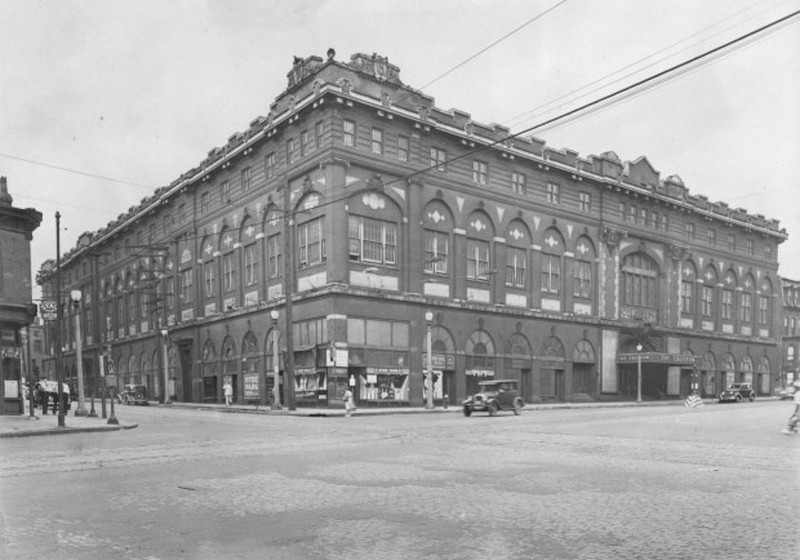
Urhig's Cave, previously at the site where the Coliseum was built
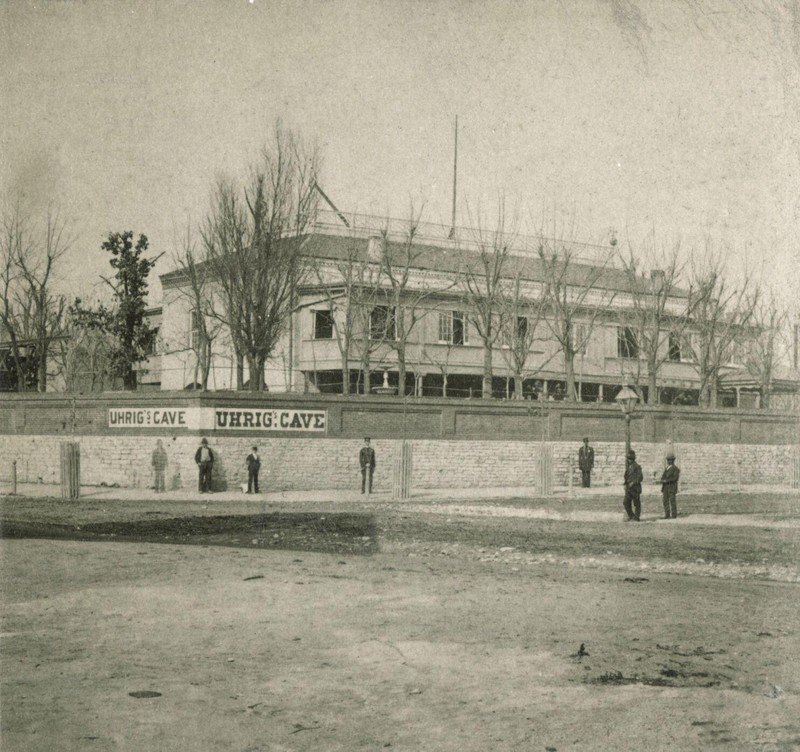
The Coliseum's ice rink (c. 1910 - 1910)
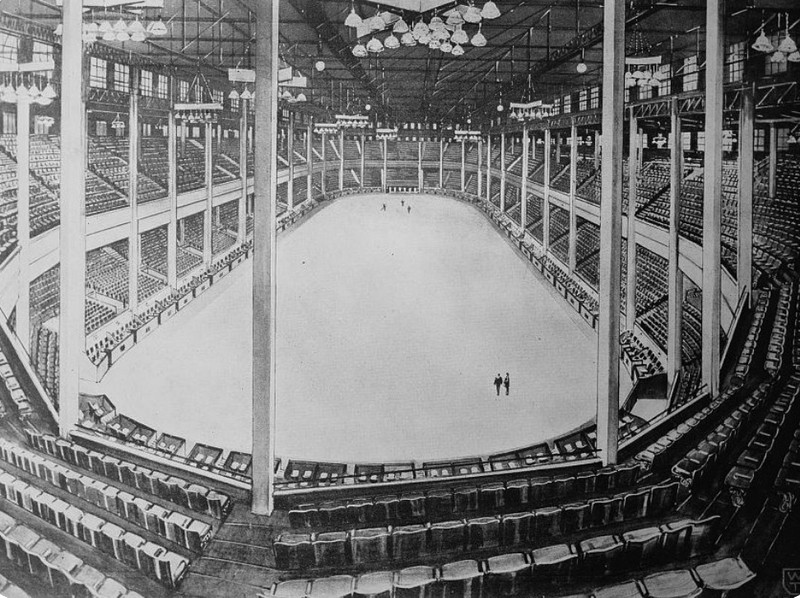
The Old Coliseum
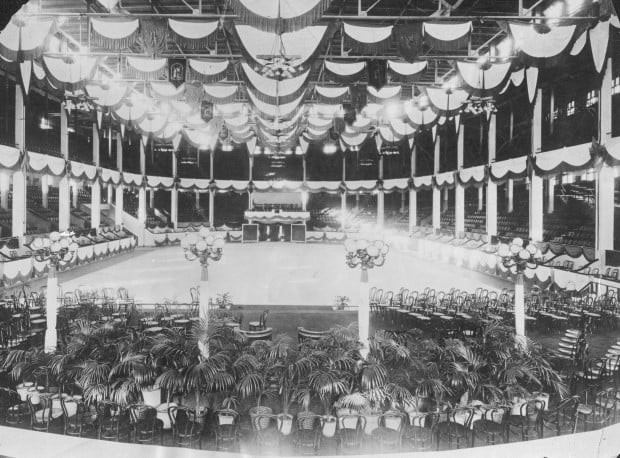
Empty chairs before a live event at the Old Coliseum
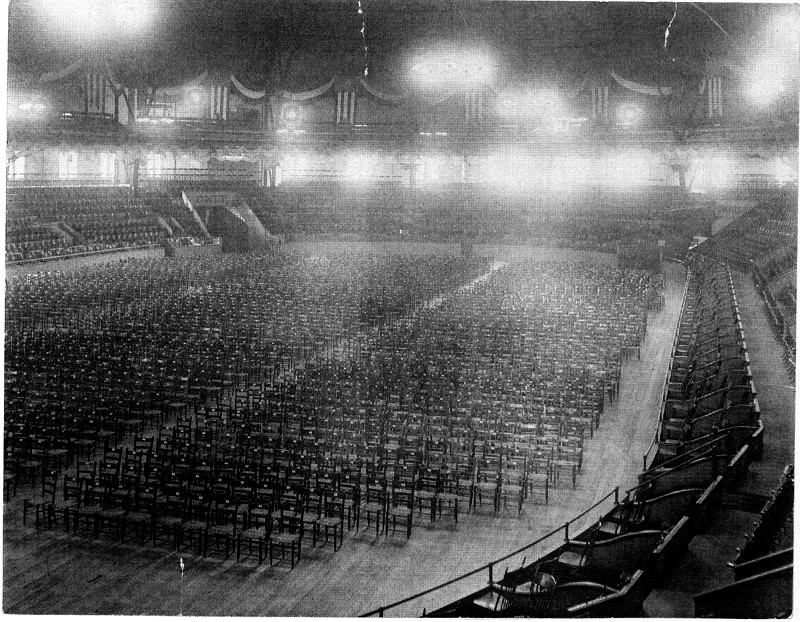
A packed house during an event at the Old Coliseum
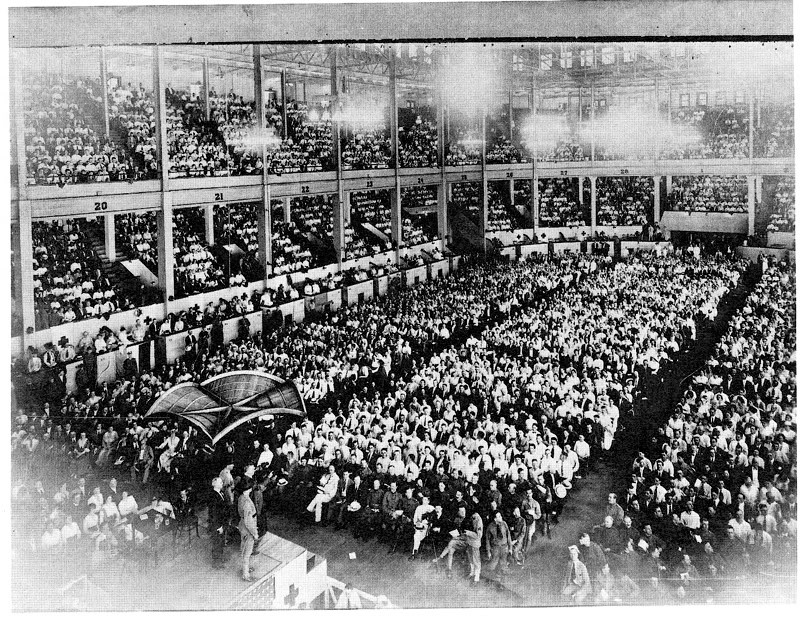
Postcard (1909)
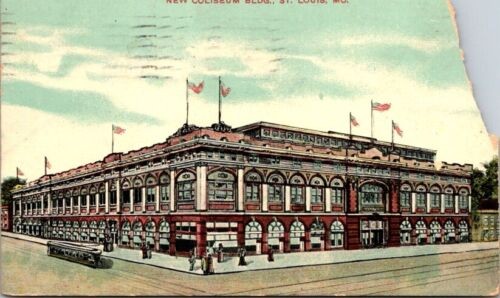
Diagram of the St. Louis Coliseum included in a 1913 invitation to the Veiled Prophet Ball, which was held on site
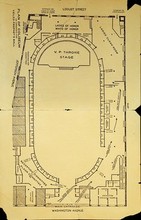
Preparations for the 1916 Democratic National Convention
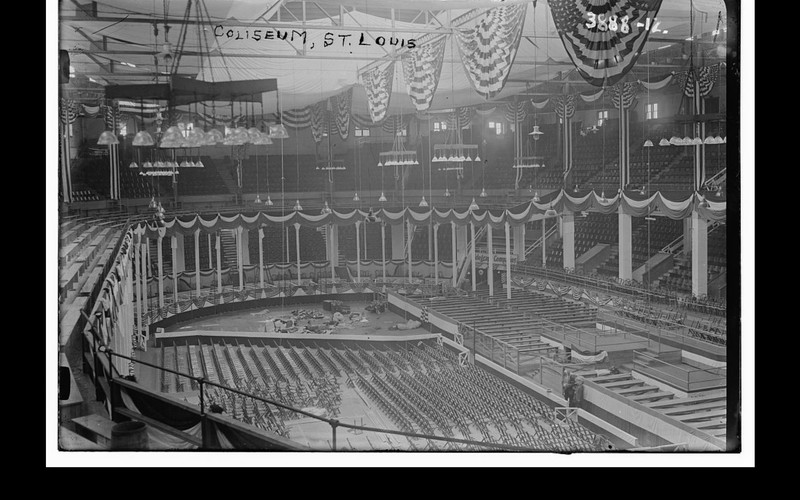
1916 Democratic National Convention at the St. Louis Coliseum
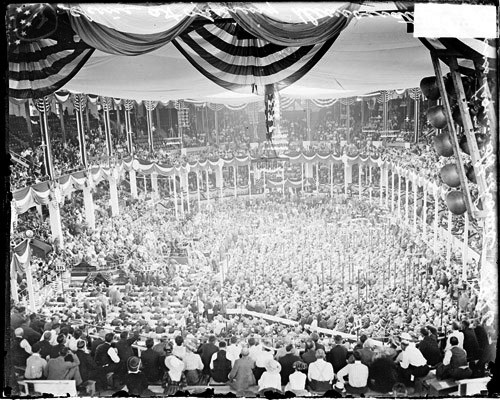
Women's Suffrage Movement silently protest outside the 1916 Democratic National Convention, which was held at the St. Louis Coliseum.
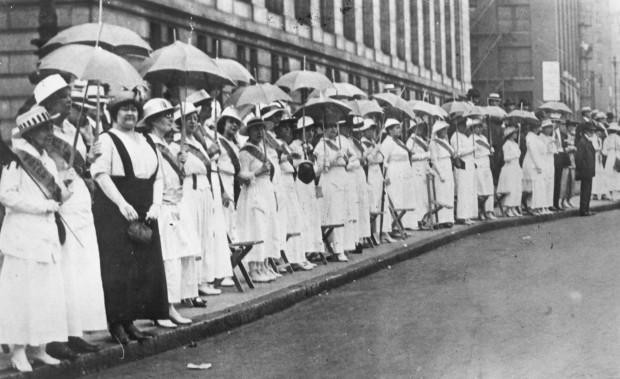
Female suffragists silently protest the 1916 Democratic National Convention, while male delegates to the convention walk past them.
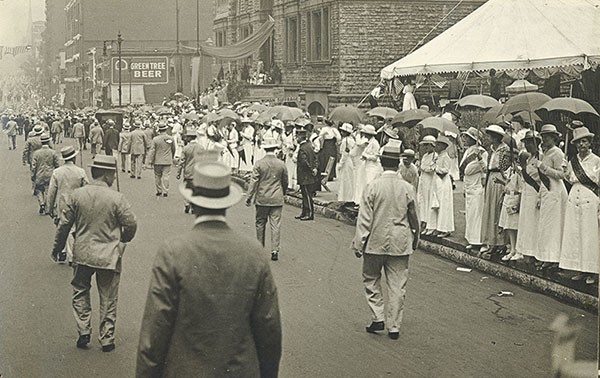
Male delegates and crowds at the 1916 Democratic National Convention
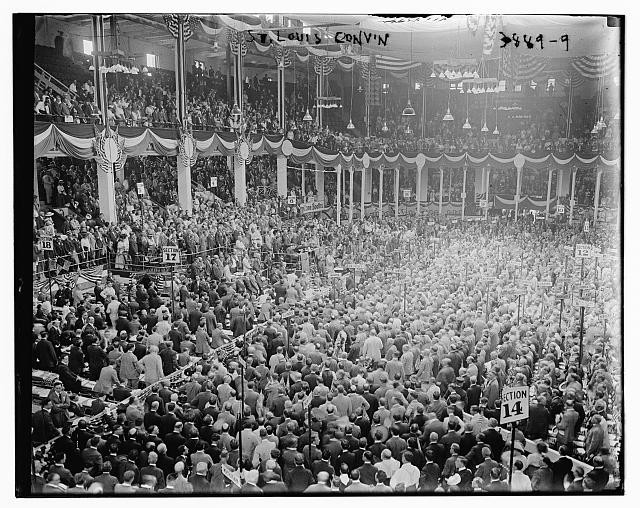
1916 Democratic National Convention held at the St. Louis Coliseum
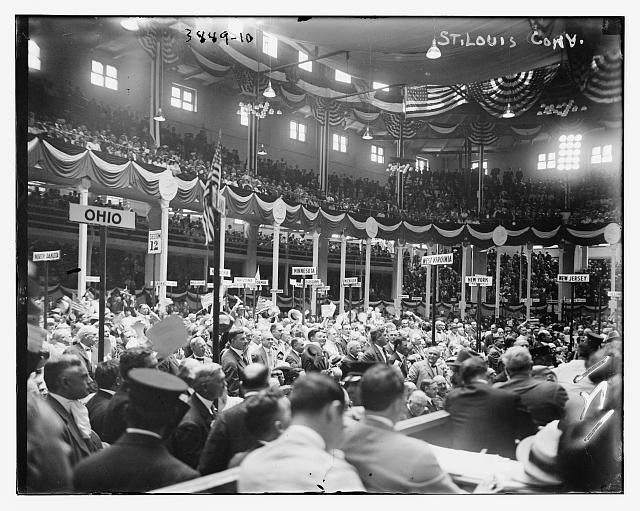
A swimming pool and fountain in the Coliseum. Olympic swimmer Johnny Weissmuller competed here in 1925.
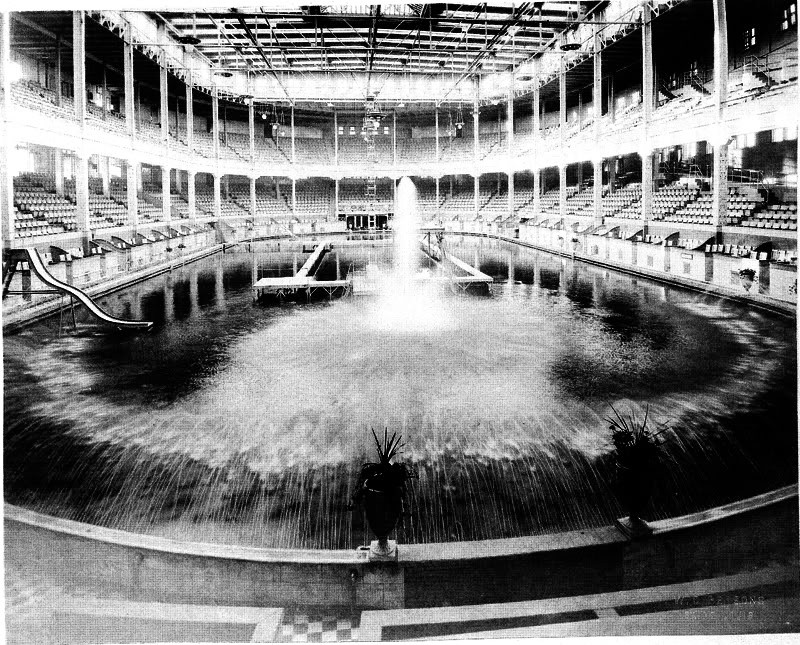
The Coliseum (1947)
.jpg)
After the Coliseum was closed in 1939, it was used for storing U.S. military vehicles during World War II.
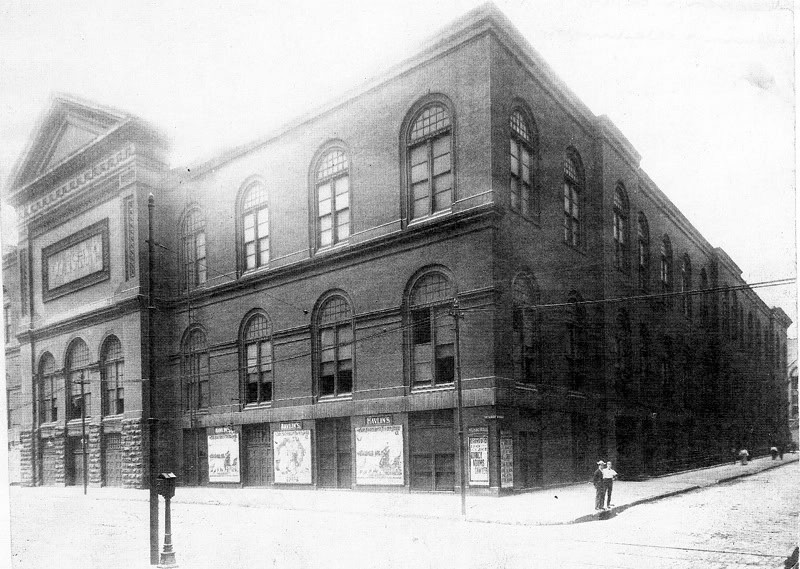
The crumbling interior of the Coliseum (1952)
.jpg)
The crumbling interior of the Coliseum (1952)
.jpg)
The Coliseum remained boarded up throughout the early 1950s.
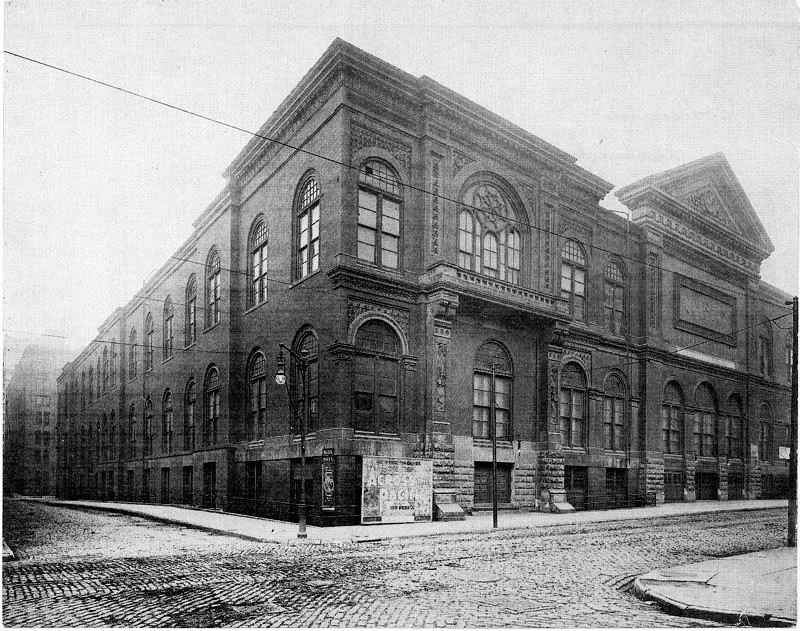
After the Coliseum was closed in 1939, it was condemned by the city and demolished in 1953.
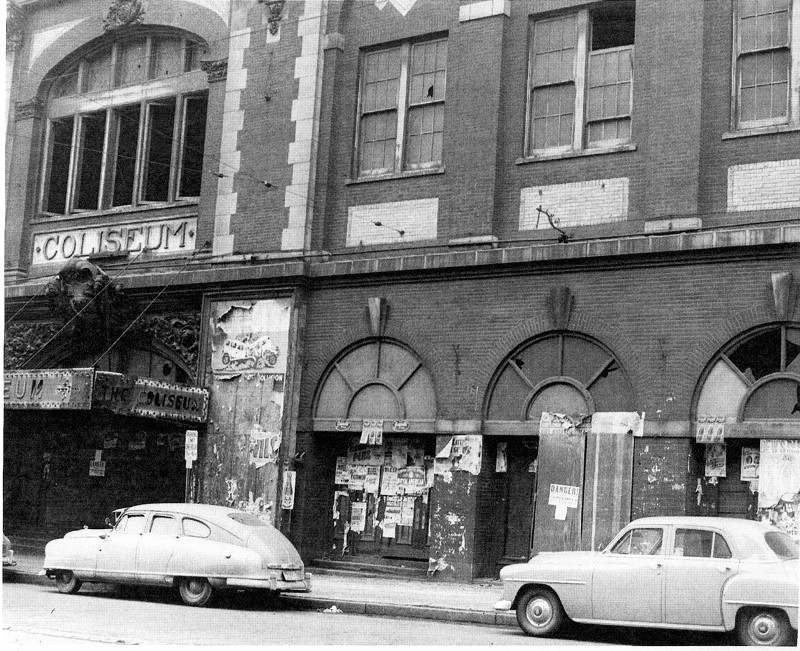
Crumbling sign (1953)
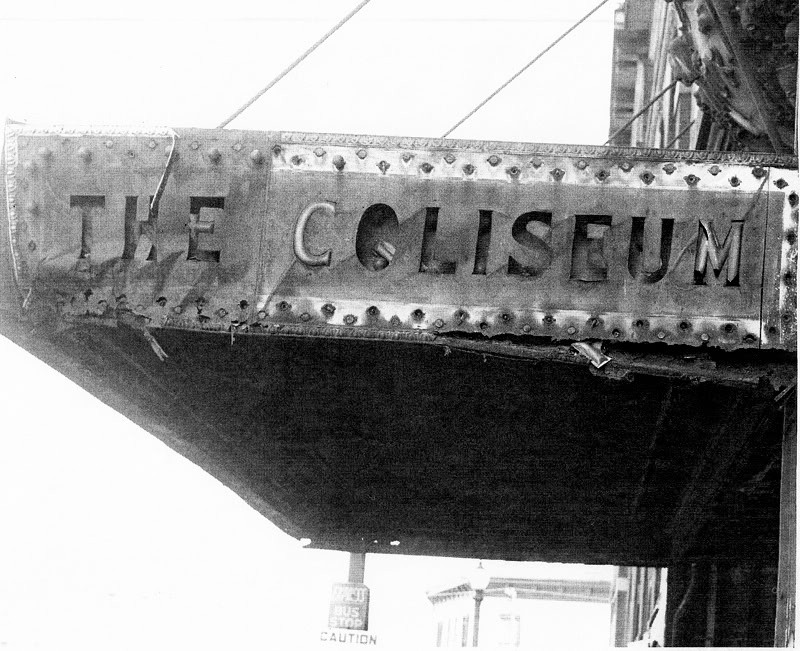
The Coliseum was condemned by the City Building Commissioner in 1953. This photo was taken the same year, shortly before demolition.
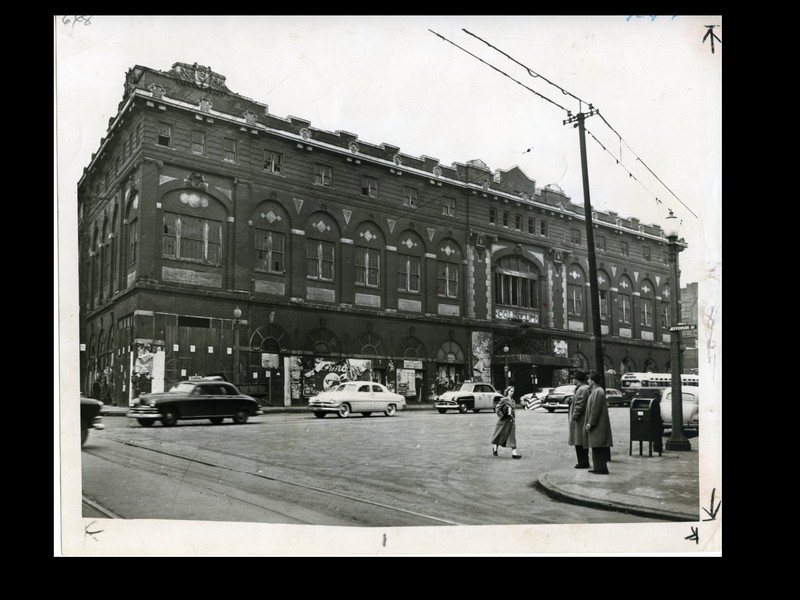
Postcard showing the same view of the Coliseum, shortly after it was built.
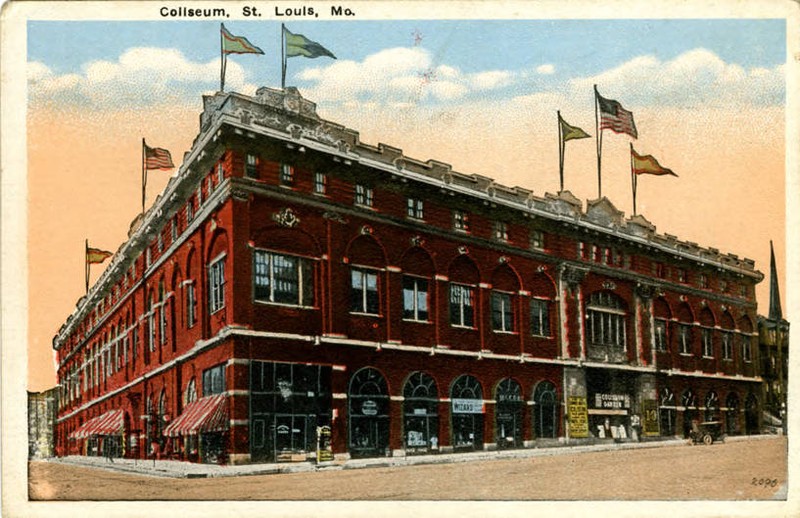
Backstory and Context
Text-to-speech Audio
In 1854, Franz Joseph Uhrig opened a beer garden restaurant and theater on a wooded parcel of land at the corner of Jefferson and Washington Avenues. The site contained a cave, which Uhrig used for storing beer underground, where it was naturally kept cool. He also developed the site as performance venue with its own opera company. Known as "Uhrig's Cave," or simply "The Cave," it was one of the first entertainment venues in St. Louis with electric lights. Some of the first U.S. performances of Gilbert and Sullivan operettas, including "H.M.S. Pinafore," were performed on site, along with dramatic theatrical productions and other shows for all ages. Although none of the city's early beer gardens still exist, Uhrig’s Cave was reimagined in the early twentieth century as the St. Louis Coliseum, after a group of businessmen in the city raised the necessary funds through private donations. Designed by the St. Louis architect Frederick C. Bonsack, plans for the Coliseum entailed an underground arena below the street, with a three-story Italian Renaissance Revival building above.
Construction began in 1908, with the laying of the cornerstone announced in The New York Times. Once completed, the Coliseum comprised an entire city block. It was billed as the largest arena in the U.S. and one of the largest anywhere in the world, with a seating capacity of 14,000 people that could be expanded to include audiences up to 20,000. When the Coliseum opened to the public in 1909, the first series of live events featured Gypsy Rodney Smith, an evangelist minister from England who held meetings and preached on site. Over the years, notable performers included the famous Italian opera singer, Enrico Caruso, who gave concerts at the Coliseum on two separate tours in the U.S. During the thirty years in which the Coliseum was open, it hosted preachers, musicians, political conventions, boxing matches, horse shows, tennis tournaments, hockey games, and other events. On various occasions, it featured an ice-skating rink, as well as a 600,000-gallon swimming pool and fountain.
The 1909 opening of the Coliseum coincided with the closing of the St. Louis Exposition and Music Hall, which was also located downtown, taking up a block on Olive Street between 13th and 14th Streets. Because the Exposition and Music Hall was demolished in 1909 to make way for the construction of a Central Library, a new space was needed as a civic auditorium for large-scale events. For the next three decades, the St. Louis Coliseum served as the city's premiere arena. In 1916, the Democratic National Convention was hosted on site, and incumbent President Woodrow Wilson was nominated. Outside the building, female suffragists launched a silent protest, lining up on both sides of the street, where the male delegates to the convention could not avoid seeing them as they walked past. Because most of the male delegates were staying at the nearby Jefferson Hotel on Locust Avenue, they were forced to walk past the line of women as they made their way to the entrance of the Coliseum. The women's silence was deliberate, symbolizing the fact that they were denied a voice in their own government. Known as the Golden Lane Parade, the women (8,000 strong) wore golden sashes with the words "Votes for Women," while staging what they called a "walkless, talkless" public demonstration to demand a party platform for women's right to vote.
When the Kiel Opera House & Auditorium (now the Stifel Theater) was constructed downtown in 1934, the heyday of the St. Louis Coliseum began coming to an end, with the venue eventually closing completely in 1939. In addition to the competition from the Kiel Auditorium, the increasing popularity of the automobile and the advent of television diverted some of the public's attention away from large-scale arena events. During World War II, the Coliseum was repurposed as a storage facility for U.S. military vehicles. Thereafter, the building remained boarded up through the early 1950s, gradually falling into hazardous neglect. In 1953, the City Building Commissioner condemned the property, stating that it was in need of immediate repair, otherwise it would have to be demolished. Time had taken too great a toll on the Coliseum. There was no consolidated effort to restore the historic building, and ten days later, it was razed to the ground.
Sources
"Caruso and His Wife Arrive in St. Louis", Newspapers. May 1st, 1919. Accessed March 2nd, 2023. https://www.newspapers.com/image/138437299/?clipping_id=32835201.
Hahn, Valerie Schremp. "Prost! Check out these St. Louis beer gardens of the past", St. Louis Today. October 15th, 2022. Accessed March 2nd, 2023. https://www.stltoday.com/entertainment/dining/prost-check-out-these-st-louis-beer-gardens-of-the-past/collection_e9a3c514-e22d-57b8-9582-32531b0f4b2e.html#1.
"July 26, 1901", Vintage St. Louis & Route 66 Facebook Page. July 26th, 2014. Accessed March 2nd, 2023. https://www.facebook.com/513201722060059/posts/july-261901-uhrigs-cave-theatre-and-beer-garden-at-jefferson-and-washington-was-/748887748491454/.
"Missouri Women: Suffrage to Statecraft", University of Missouri: Missouri Historic Costume and Textile Collection. Accessed March 4th, 2023. https://mhctc.missouri.edu/exhibitions/missouri-women-suffrage-to-statecraft/.
Patterson, Steve. "St. Louis’ Beer Garden History Goes Back 189 Years, Continues Today", Urban Review St. Louis. July 10th, 2012. Accessed March 2nd, 2023. https://www.urbanreviewstl.com/2012/07/st-louis-beer-garden-history-goes-back-189-years-continues-today/.
"People: Frederick C. Bonsack", Dynamic St. Louis . Accessed March 2nd, 2023. https://dynamic.stlouis-mo.gov/history/peopledetail.cfm?Master_ID=1925.
"St. Louis Coliseum", The New York Times. August 23rd, 1908. Accessed March 2nd, 2023. https://timesmachine.nytimes.com/timesmachine/1908/08/23/104749544.pdf.
Stadler, Frances Hurde. St. Louis Day by Day. Patrice Press, 1989.
Staff. "St. Louis suffragists staged protest for 1916 Democratic convention", St. Louis Today. August 19th, 2010. Accessed March 2nd, 2023. https://www.stltoday.com/st-louis-suffragists-staged-protest-for-1916-democratic-convention/image_97887e66-abd2-11df-a7ed-00127992bc8b.html.
Studio, SLM Partner. "The Missouri History Museum tells the story of the fight for suffrage in St. Louis", St. Louis Magazine. October 12th, 2020. Accessed March 4th, 2023. https://www.stlmag.com/partnercontent/the-fight-for-suffrage-in-st-louis-at-the-missouri-history-museum/.
Weaver, H. Dwight. Missouri Caves in History and Legend. University of Missouri Press, 2008.
Wight, Ted. "Throwback Thursday: St. Louis Coliseum, Cracker Castle & More", St. Louis Style. July 25th, 2019. Accessed March 2nd, 2023. https://www.stlouis.style/throwback-thursday/throwback-thursday-st-louis-coliseum-cracker-castle/.
Zeman, Mark. Historic Tales of St. Louis. Historic Tales. Arcadia Publishing Incorporated, 2023.
St. Louis Style
St. Louis Post-Dispatch
LOC / George Grantham Bain Collection
St. Louis Post-Dispatch
Sublunar Photography / Missouri Historical Society
Sublunar Photography / Missouri Historical Society
Public Domain
WikiCommons
Library of Congress
The Riverfront Times
St. Louis Post-Dispatch
University of Missouri: Missouri Historic Costume and Textile Collection
Sublunar Photography / Missouri Historical Society
LOC / George Grantham Bain Collection
Sublunar Photography / Missouri Historical Society
Missouri Historical Society / St. Louis Magazine
Sublunar Photography / Missouri Historical Society
Sublunar Photography / Missouri Historical Society
Sublunar Photography / Missouri Historical Society
Sublunar Photography / Missouri Historical Society
Sublunar Photography / Missouri Historical Society
Photograph by Ed Sedej, St. Louis Globe-Democrat / Mercantile Library at the University of Missouri-St. Louis
Public Domain
